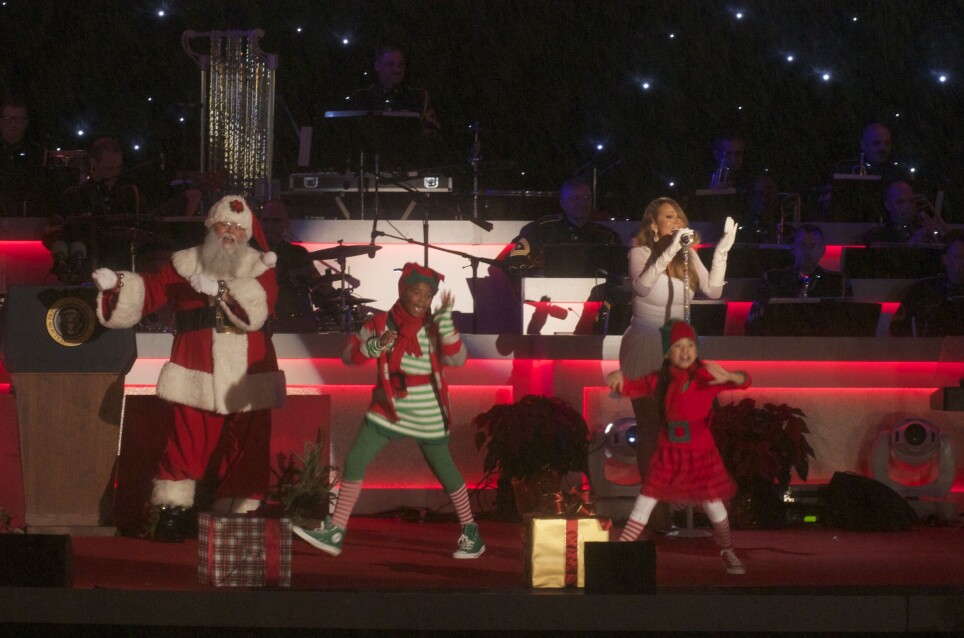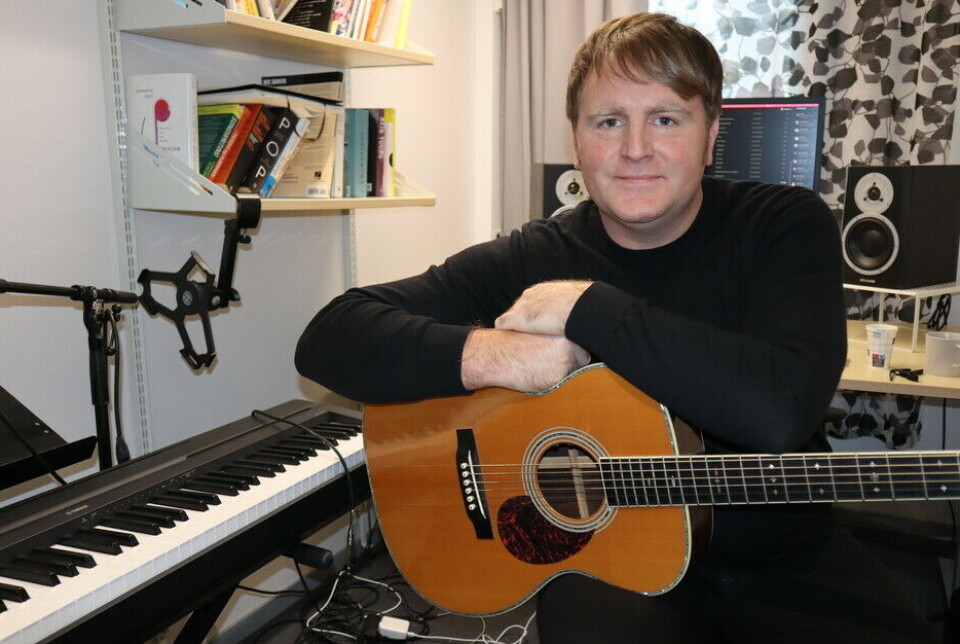THIS ARTICLE/PRESS RELEASE IS PAID FOR AND PRESENTED BY THE University of Agder - read more

Christmas music follows its own recipe
Although the Christmas music genre covers a wide spectrum, there are certain sounds that tend to be used over and over again.
Whether you hate them or love them, some Christmas songs keep coming back year after year. For example, Mariah Carey’s All I Want for Christmas Is You and Last Christmas by British pop duo Wham.
“These songs are now typically played in shopping centres. They came as a breath of fresh air to the Christmas carol tradition with a new sound in the 80s and 90s. They are fast-paced and make you happy, want to dance, and celebrate Christmas," Askil Holm says.
He is an associate professor who teaches at the Faculty of Fine Arts at the University of Agder, and is more than happy to share his own Christmas playlist on Spotify.
Here you can find everything from songs in dialect by Alf Prøysen from the 50s and 60s via sleazy 90s hits such as Boyzvoice's Let Me Be Your Father X-Mas, to the very recent En gammeldags jul (Støres julevise) (An old-fashioned Christmas (Støre's Christmas carol) by Jon Niklas Rønning and Trond Hanssen from 2022.
Although the range is wide, there are some common denominators.
“There are usually 11 instruments that recur in typical Christmas songs,” Holm says. He is himself an experienced songwriter and artist.

Bells are a must
Before hearing the conclusion, we asked some students in Vilhelm Krag Hall on campus Kristiansand about what they think a good Christmas song should contain.
“Bells are essential. Preferably something that creates an atmosphere, and is about being with family,” Silje Celine Lien says.
Fabian Cleve Johansen thinks nostalgia is an important element. Although we can’t get away from the bells.
“The bells are a must. And the song should evoke the Christmas feeling you had as a child,” Johansen says.

More than jingle bells
Not surprisingly, there isn’t just one type of bells that makes a carol a carol, according to Holm. If you want to impress someone at your Christmas party, just memorise what the different bells are called:
“The first is the carillon, which sounds like small church bells. Then we have celesta and chimes, handbells and sleigh bells – associated with the sound of Santa Claus,” Holm says.
But his list doesn’t end there.
“We also need a choir, lute, organ, piccolo trumpet and snare drums. The latter are heard in Little Drummer Boy. Slightly out of tune pianos as well, such as in the intro to Home for Christmas by Maria Mena,” he says.
Chord progressions
With 60,000 to 70,000 songs released daily on streaming services like Spotify, around half of them are Christmas music these days. You might think that it is just a matter of following a formula to succeed in creating a Christmas song.
Student Jacob Even Sæterøy studied music at upper secondary school and his analysis of how to create a Christmas hit goes even deeper.
“You have a typical Christmas chord progression, with 6-2-5-1,” he says.
Detailed knowledge like this warms Holm’s musical heart.
“That is correct! This chord progression is commonly used in jazz music, and also in Christmas music. A great example of a song that uses this chord progression is White Christmas by Irving Berlin, or It’s the Most Wonderful Time of the Year by Edward Pola and George Wyle,” Holm says.

Feast and revelry
Some songs go down in the history books as so-called evergreens, while others are short-lived.
What the classics have in common is that they often connect to memories from childhood. Askil Holm’s own Christmas favourite is the Norwegian song writer Alf Prøysen.
Several of the great Christmas carols from the last century were commissioned. In 1951, the weekly magazine Magasinet for Alle commissioned Alf Prøysen to write a Christmas carol that could "bring Christmas down from the heavens and into a grey living room".
“He did that brilliantly when he wrote Julekveldsvise. Prøysen’s starting point was Christmas in Norway and all the mundane Christmas preparations, and he managed to explain the nativity story in a popular way,” Holm says.

This article/press release is paid for and presented by the University of Agder
This content is created by the University of Agder's communication staff, who use this platform to communicate science and share results from research with the public. The University of Agder is one of more than 80 owners of ScienceNorway.no. Read more here.
See more content from the University of Agder:
-
The law protects the students. What about the teachers?
-
This researcher has helped more economics students pass their maths exams
-
There are many cases of fathers and sons both reaching elite level in football. Why is that?
-
How we used plants to protect ourselves from evil
-
What is it like for nurses to promote health behind bars?
-
This can make life easier for new maths teachers




































